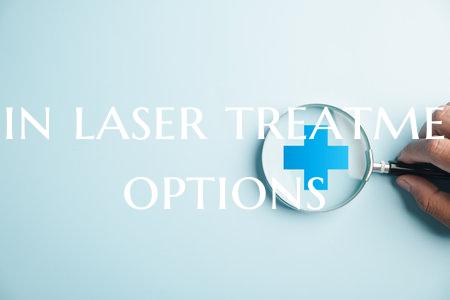
Vein laser treatment options
Introduction: Vein laser treatment options offer advanced solutions for individuals seeking to address various vein issues, such as spider veins and varicose veins. With technological advancements in the field of medical aesthetics, these treatments have become more effective, safer, and minimally invasive. In this guide, we will explore the different vein laser treatment options available, their benefits, and what to expect during the treatment process.
Understanding Vein Conditions: Before delving into the various vein laser treatments, it is important to understand the different types of vein conditions that can be effectively treated using laser technology. Spider veins, which are small, dilated blood vessels close to the skin's surface, and varicose veins, characterized by enlarged, twisted veins typically found in the legs, are common issues that can cause discomfort and cosmetic concerns.
Types of Vein Laser Treatments: 1. Endovenous Laser Ablation (EVLA): EVLA is a minimally invasive procedure that involves the use of laser energy to treat varicose veins. The laser is inserted into the affected vein, where it emits heat to seal the vein shut, redirecting blood flow to healthier veins. EVLA is highly effective in treating varicose veins and offers faster recovery times compared to traditional vein stripping surgery.
2. Surface Laser Treatments: For spider veins and smaller varicose veins close to the skin's surface, surface laser treatments are often recommended. This non-invasive procedure targets the affected veins with laser energy, causing them to collapse and gradually fade from view. Multiple sessions may be required for optimal results.
Benefits of Vein Laser Treatments: - Minimally Invasive: Vein laser treatments are minimally invasive procedures that typically do not require general anesthesia or lengthy recovery times. - Precision Targeting: Laser technology allows for precise targeting of the affected veins, minimizing damage to surrounding tissues. - Quick Recovery: Patients can usually resume their normal activities shortly after the treatment, with minimal downtime. - Improved Cosmetic Appearance: Vein laser treatments can effectively reduce the appearance of unsightly veins, improving the overall cosmetic appearance of the skin.
What to Expect: During a vein laser treatment session, patients may experience a mild tingling or stinging sensation as the laser energy is delivered to the targeted veins. The procedure is generally well-tolerated, and any discomfort can be managed with topical anesthesia or cooling techniques. After the treatment, patients may be advised to wear compression garments and avoid strenuous activities for a certain period to enhance the healing process.
Conclusion: Vein laser treatment options provide effective solutions for individuals looking to address vein-related issues with minimal downtime and impressive results. By understanding the different types of vein laser treatments available, their benefits, and what to expect during the treatment process, individuals can make informed decisions about their vein health and cosmetic concerns. If you are considering vein laser treatments, consult with a qualified healthcare provider to explore the most suitable options for your individual needs.